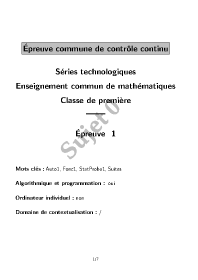Pour tout ce qui suit, on munit l'espace d’un repère orthonormé (O ; →i ; →j).
Définition du produit scalaire
Pour →u(x ; y) et →v(x’ ; y’) deux vecteurs non nuls du plan :
→u⋅→v = ‖→u‖ ‖→v‖ cos(→u ; →v)
Si l’un des deux vecteurs est nul, →u⋅→v = 0.
Expression analytique du produit scalaire dans un repère orthonormé
Pour →u(x ; y) et →v(x’ ; y’) deux vecteurs du plan : →u⋅→v=xx′+yy′ qui est un nombre réel.
Formules d’Al-Kashi
Soit ABC un triangle quelconque.
BC2 = AB2 + AC2 - 2AB×AC cos(ˆA)
AB2 = AC2 + BC2 - 2AC×BC cos(ˆC)
AC2 = AB2 + BC2 - 2AB×BC cos(ˆB)




